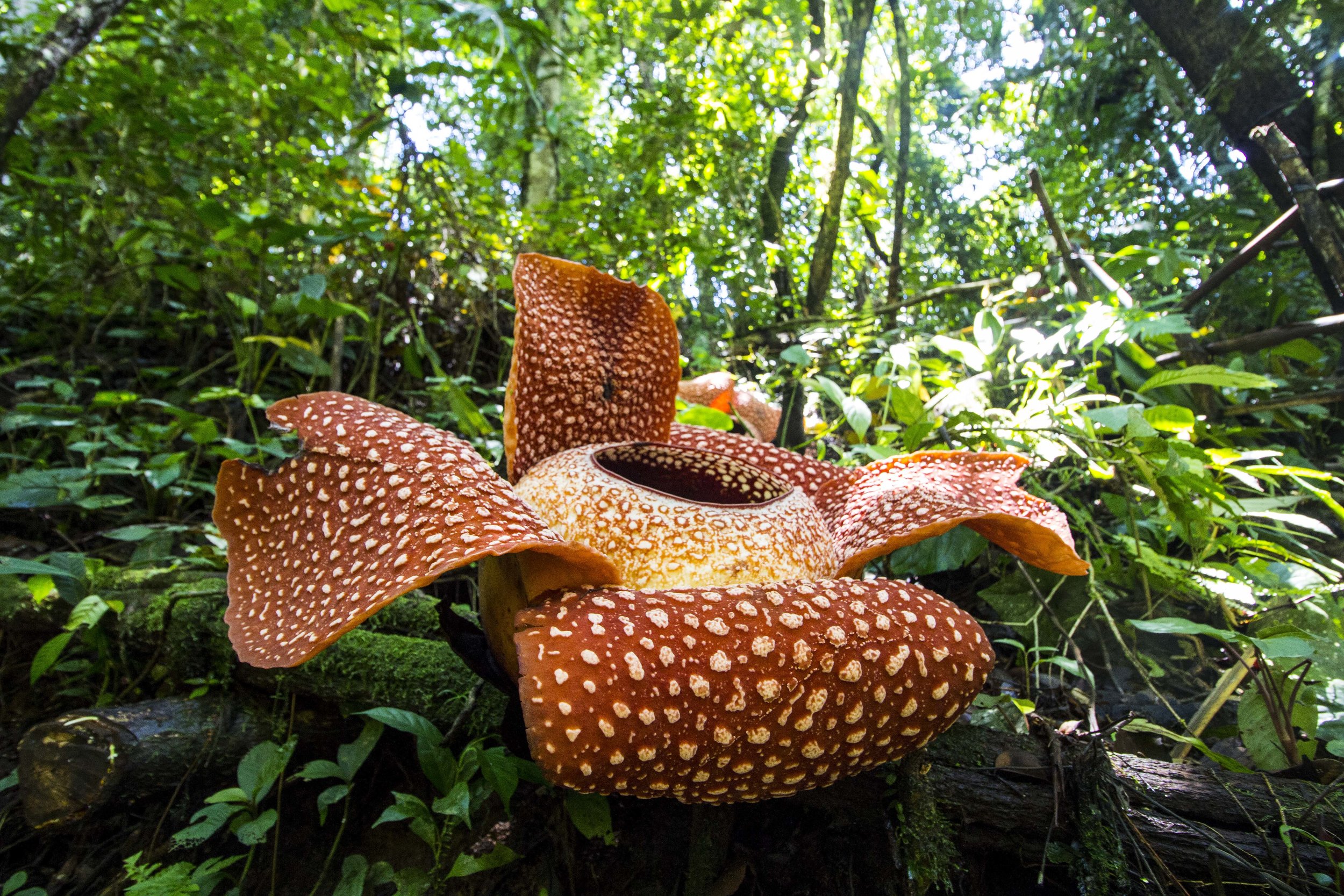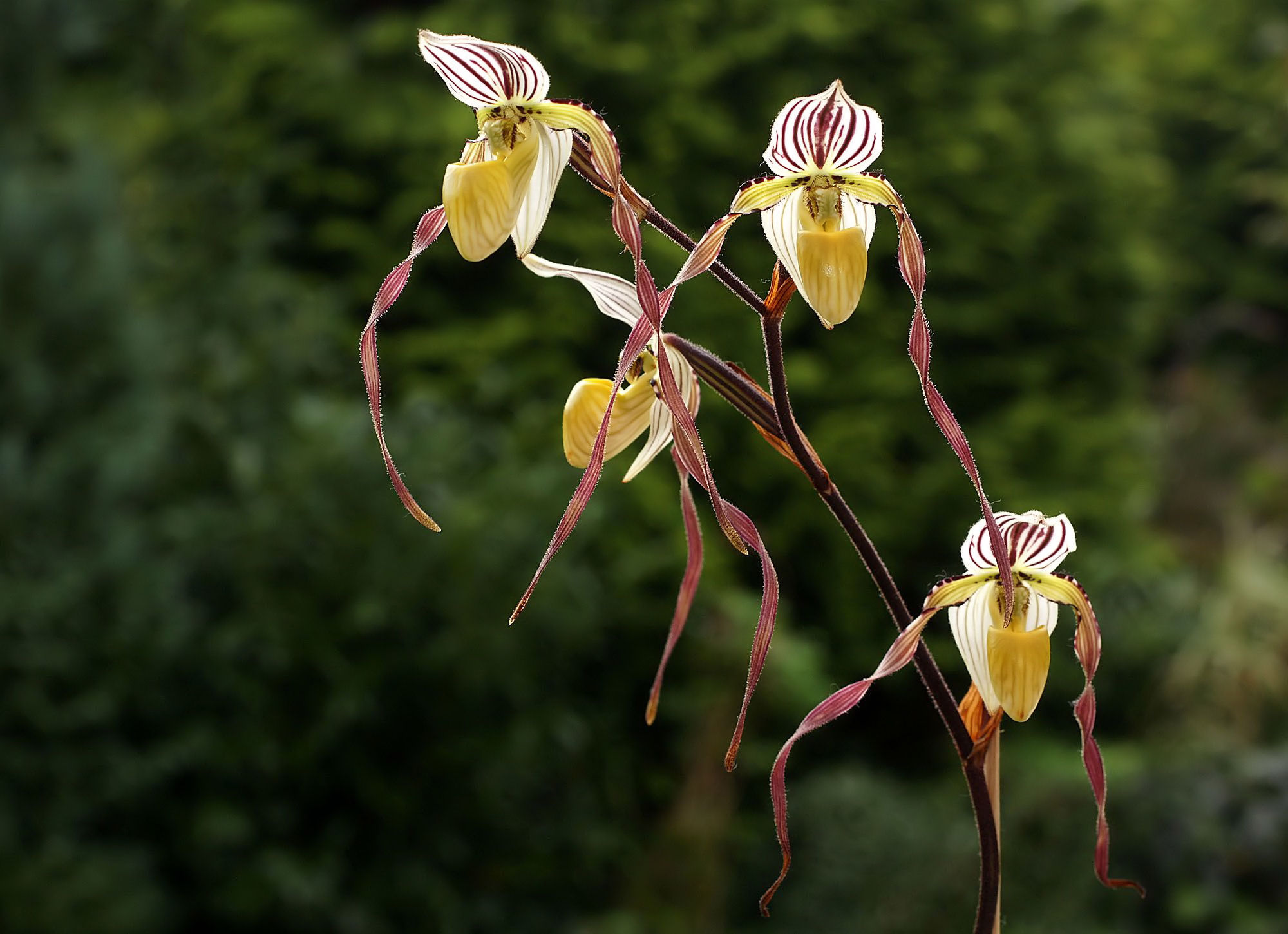Photo by Dukeabruzzi licensed under CC BY-SA 4.0
The leading cause of extinction on this planet is loss of habitat. As an ecologist, it pains me to see how frequently this gets ignored. Plants, animals, fungi - literally every organism on this planet needs a place to live. Without habitat, we are forced to pack our flora and fauna into tiny collections in zoos and botanical gardens, completely disembodied from the environment that shaped them into what we know and love today. That’s not to say that zoos and botanical gardens don’t play critically important roles in conservation, however, if we are going to stave off total ecological meltdown, we must also be setting aside swaths of wild lands.
There is no way around it. We cannot have our cake and eat it too. Land conservation must be a priority both at the local and the global scale. Wild spaces support life. They buffer life from storms and minimize the impacts of deadly diseases. Healthy habitats filter the water we drink and, for many people around the globe, provide much of the food we eat. Every one of us can think back to our childhood and remember a favorite stretch of stream, meadow, or forest that has since been gobbled up by a housing development. For me it was a forested stream where I learned to love the natural world. I would spend hours playing in the creek, climbing trees, and capturing bugs to show my parents. Since that time, someone leveled the forest, built a house, and planted a lawn. With that patch of forest went all of the insects, birds, and wildflowers it once supported.
Scenarios like this play out all too often and sadly on a much larger scale than a backyard. Globally, forests have taken the brunt of human development. It is hard to get a sense of the scope of deforestation on a global scale, but the undisputed leaders in deforestation are Brazil and Indonesia. Though the Amazon gets a lot of press, few may truly grasp the gravity of the situation playing out in Southeast Asia.
Deforestation is a clear and present threat throughout tropical Asia. This region is growing both in its economy and population by about 6% every year and this growth has come at great cost to the environment. Indonesia (alongside Brazil) accounts for 55% of the world’s deforestation rates. This is a gut-wrenching statistic because Indonesia alone is home to the most extensive area of intact rainforest in all of Asia. So far, nearly a quarter of Indonesia’s forests have been cleared. It was estimated that by 2010, 2.3 million hectares of peatland forests had been felled and this number shows little signs of slowing. Experts believe that if these rates continue, this area could lose the remainder of its forests by 2056.
Consider the fact that Southeast Asia contains 6 of the world’s 25 biodiversity hotspots and you can begin to imagine the devastating blow that the levelling of these forests can have. Much of this deforestation is done in the name of agriculture, and of that, palm oil and rubber take the cake. Southeast Asia is responsible for producing 86% of the world’s palm oil and 87% of the world’s natural rubber. What’s more, the companies responsible for these plantations are ranked among some of the least sustainable in the world.
Borneo is home to a bewildering array of life. Researchers working there are constantly finding and describing new species, many of which are found nowhere else in the world. Of the roughly 15,000 plant species known from Borneo, botanists estimate that nearly 5,000 (~34%) of them are endemic. This includes some of the more charismatic plant species such as the beloved carnivorous pitcher plants in the genus Nepenthes. Of these, 50 species have been found growing in Borneo, many of which are only known from single mountain tops.
It has been said that nowhere else in the world has the diversity of orchid species found in Borneo. To date, roughly 3,000 species have been described but many, many more await discovery. For example, since 2007, 51 new species of orchid have been found. Borneo is also home to the largest flower in the world, Rafflesia arnoldii. It, along with its relatives, are parasites, living their entire lives inside of tropical vines. These amazing plants only ever emerge when it is time to flower and flower they do! Their superficial resemblance to a rotting carcass goes much deeper than looks alone. These flowers emit a fetid odor that is proportional to their size, earning them the name “carrion flowers.”
Rafflesia arnoldii in all of its glory. Photo by SofianRafflesia licensed under CC BY-SA 4.0
Photo by Orchi licensed under CC BY-SA 3.0
If deforestation wasn’t enough of a threat to these botanical treasures, poachers are having considerable impacts on Bornean botany. The illegal wildlife trade throughout southeast Asia gets a lot of media attention and rightfully so. At the same time, however, the illegal trade of ornamental and medicinal plants has gone largely unnoticed. Much of this is fueled by demands in China and Vietnam for plants considered medicinally valuable. At this point in time, we simply don’t know the extent to which poaching is harming plant populations. One survey found 347 different orchid species were being traded illegally across borders, many of which were considered threatened or endangered. Ever-shrinking forested areas only exacerbate the issue of plant poaching. It is the law of diminishing returns time and time again.
Photo by Orchi licensed under CC BY-SA 3.0
But to lump all Bornean forests under the general label of “rainforest” is a bit misleading. Borneo has multitude of forest types and one of the most globally important of these are the peatland forests. Peatlands are vital areas of carbon storage for this planet because they are the result of a lack of decay. Whereas leaves and twigs quickly breakdown in most rainforest situations, plant debris never quite makes it that far in a peatland. Plant materials that fall into a peatland stick around and build up over hundreds and thousands of years. As such, an extremely thick layer of peat is formed. In some areas, this layer can be as much as 20 meters deep! All the carbon tied up in the undecayed plant matter is carbon that isn’t finding its way back into our atmosphere.
Sadly, tropical peatlands like those found in Borneo are facing a multitude of threats. In Indonesia alone, draining, burning, and farming (especially for palm oil) have led to the destruction of 1 million hectares (20%) of peatland habitat in only a single decade. The fires themselves are especially worrisome. For instance, it was estimated that fires set between 1997-1998 and 2002-2003 in order to clear the land for palm oil plantations released 200 million to 1 billion tonnes of carbon into our atmosphere. Considering that 60% of the world’s tropical peatlands are found in the Indo-Malayan region, these numbers are troubling.
The peatlands of Borneo are totally unlike peatlands elsewhere in the world. Instead of mosses, gramminoids, and shrubs, these tropical peatlands are covered in forests. Massive dipterocarp trees dominate the landscape, growing on a spongey mat of peat. What’s more, no water flows into these habitats. They are fed entirely by rain. The spongey nature of the peat mat holds onto water well into the dry season, providing clean, filtered water where it otherwise wouldn’t be available.
Photo by JeremiahsCPs licensed under CC BY-SA 3.0
This lack of decay coupled with their extremely acidic nature and near complete saturation makes peat lands difficult places for survival. Still, life has found a way, and Borneo’s peatlands are home to a staggering diversity of plant life. They are so diverse, in fact, that when I asked Dr. Craig Costion, a plant conservation officer for the Rainforest Trust, for something approaching a plant list for an area of peatland known as Rungan River region, he replied:
“Certainly not nor would there ever be one in the conceivable future given the sheer size of the property and the level of diversity in Borneo. There can be as many as a 100 species per acre of trees in Borneo... Certainly a high percentage of the species would only be able to be assigned to a genus then sit in an herbarium for decades until someone describes them.”
And that is quite remarkable when you think about it. When you consider that the Rungan River property is approximately 385,000 acres, the number of plant species to consider quickly becomes overwhelming. To put that in perspective, there are only about 500 tree species native to the whole of Europe! And that’s just considering the trees. Borneo’s peatlands are home to myriad plant species from liverworts, mosses, and ferns, to countless flowering plants like orchids and others. We simply do not know what kind of diversity places like Borneo hold. One could easily spend a week in a place like the Rungan River and walk away with dozens of plant species completely new to science. Losing a tract of forest in such a biodiverse region is a huge blow to global biodiversity.
Nepenthes ampullaria relies on decaying plant material within its pitcher for its nutrient needs. Photo by en:User:NepGrower licensed under Public Domain
Also, consider that all this plant diversity is supporting even more animal diversity. For instance, the high diversity of fruit trees in this region support a population of over 2,000 Bornean orangutans. That is nearly 4% of the entire global population of these great apes. They aren’t alone either, the forested peatlands of Borneo are home to species such as the critically endangered Bornean white-bearded gibbon, the proboscis monkey, the rare flat-headed cat, and the oddly named otter civet. All these animals and more rely on the habitat provided by these forests. Without forests, these animals are no more.
The flat-headed cat, an endemic of Borneo. Photo by Jim Sanderson licensed under CC BY-SA 3.0
At this point, many of you may be feeling quite depressed. I know how easy it is to feel like there is nothing you can do to help. Well, what if I told you that there is something you can do right now to save a 385,000 acre chunk of peatland rainforest? That’s right, by heading over to the Rainforest Trust’s website (https://www.rainforesttrust.org/project/saving-stronghold-critically-endangered-bornean-orangutan/) you can donate to their campaign to buy up and protect the Rungan River forest tract.
By donating to the Rainforest Trust, you are doing your part in protecting biodiversity in one of the most biodiverse regions in the world. What’s more, you can rest assured that your money is being used effectively. The Rainforest Trust consistently ranks as one of the top environmental protection charities in the world. Over their nearly three decades of operation, the Rainforest Trust has protected more than 15.7 million acres of land in over 20 countries. Like I said in the beginning, habitat loss is the leading cause of extinction on this planet. Without habitat, we have nothing. Plants are that habitat and by supporting organizations such as the Rainforest Trust, you are doing your part to fight the biggest threats our planet faces.
Further Reading: [1] [2] [3] [4] [5] [6] [7] [8] [9] [10]
Photo Credits: [1] [2] [3] [4] [5] [6] [7] [8] [9] [10] [11]








![[SOURCE]](https://images.squarespace-cdn.com/content/v1/544591e6e4b0135285aeb5b6/1508201752975-7W5T194C1IK9IC4ZE62M/batpass1.JPG)
![[SOURCE]](https://images.squarespace-cdn.com/content/v1/544591e6e4b0135285aeb5b6/1508203341477-I655ZRIK84ZNM78XLMYE/image-asset.jpeg)
![[SOURCE]](https://images.squarespace-cdn.com/content/v1/544591e6e4b0135285aeb5b6/1502287294855-TVAI4Z9AVY1JCQ7AFGJU/image-asset.png)



















